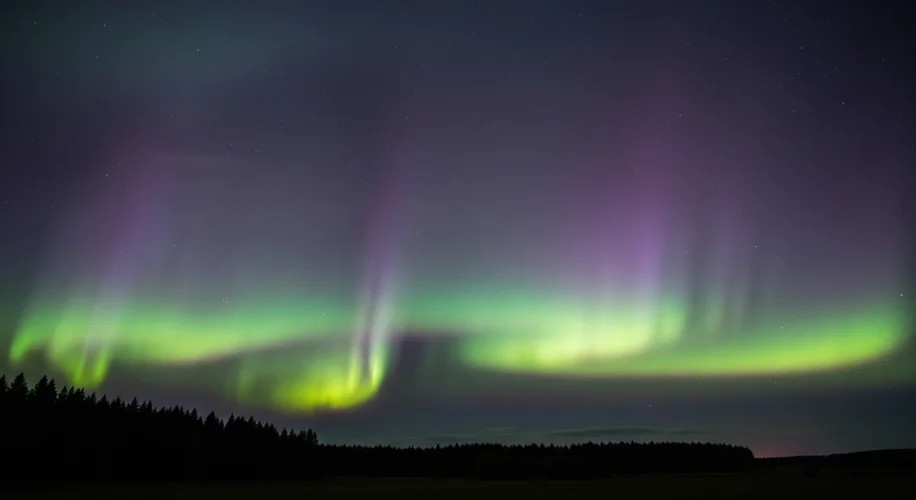Did you know that tonight, August 7-8, 2025, is a special night for skygazers? Thanks to a rare solar storm, the Northern Lights, or aurora borealis, could be visible across a significant portion of the United States – potentially in up to 18 states!
As someone who studies our atmosphere, I get excited about these celestial events. They’re a direct, beautiful reminder of the powerful forces at play between our planet and the sun.
What Exactly Causes the Northern Lights?
Think of the sun as a giant, active star. It constantly sends out a stream of charged particles called the solar wind. When the sun has a particularly energetic outburst, like a geomagnetic storm, it can send a denser, faster stream of these particles towards Earth.
Our planet is protected by a magnetic field, which usually guides most of these charged particles towards the North and South Poles. When these particles collide with gases in our atmosphere – like oxygen and nitrogen – they release energy in the form of light. This light is what we see as the aurora.
Different gases and different altitudes create different colors. Oxygen often produces green and red hues, while nitrogen can contribute to blue and purple.
Why is This Happening Now?
The description mentions a “rare solar storm.” Geomagnetic storms are classified by their intensity, and a strong enough storm can push the aurora further south than usual. This is why, on nights like tonight, people in places like Georgia, or even further south, might have a chance to see them – areas where the aurora isn’t typically visible.
The fact that they might be seen in up to 18 states is pretty remarkable and indicates a significant solar event is underway. It’s a great opportunity for many people to witness this natural phenomenon without needing to travel to the extreme northern latitudes.
How to Increase Your Chances of Seeing Them
If you’re in one of the lucky areas, here’s what you should do:
- Find a Dark Spot: Get away from city lights. The darker the sky, the more likely you are to see the faint glow of the aurora.
- Look North: Even though they might be visible further south, the best viewing direction is usually towards the north.
- Be Patient: Auroras can be faint and come and go. Give your eyes time to adjust to the dark.
- Check Local Forecasts: While the solar storm is the cause, local weather conditions (like cloud cover) will determine visibility.
It’s truly fascinating to see how these events connect our planet to the sun in such a visible way. Enjoy the show if you can catch a glimpse!

